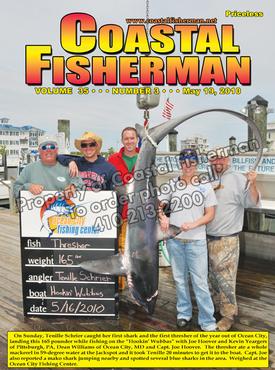


Article by Pat Schrawder
 High Definition Captures the Marine Electronics Market
High Definition Captures the Marine Electronics Market
It started small but now seems to be the standard for marine electronics, especially in the fish finder category That is the use of digital processing and so-called high definition displays. But what do they do for you and are they really a big deal or just more “hype” to sell a product.
First you need to realize that the term “high definition”, as it applies to marine equipment, is not exactly the same as your new LCD Hi-Def television, although the principle is the same.
In general, high definition refers to the process of pixilation and scanning of the image that is produced on the LCD display. The average pixel count (number of dots of color) for most marine displays out today is 800 x 600 as compared to those without so-called Hi-Def presentations that have 400 or less. The end result is that the images are crisper, brighter, and sharper. If I had my choice between a fish finder with Hi-Def and one without, all other things being equal, I would definitely go with the Hi-Def model.
The other technology that is being used by most better fish finders today is “digital processing”, although it may go by different names. Several manufacturers are using their own version of it with their own “patented” design but they all do basically the same thing. Digital processing removes excessive noise and unwanted signals resulting in clearer, less cluttered images. The technology of how this is achieved is something we don’t need to get into here but it is true, some will argue, that the resulting images suffer some loss as noisy returns are eliminated. However, the remaining images that are the really important ones are more defined, especially when combined with Hi-Def presentations.
Here is how some of the main manufacturers of fish finders describe their products:
FURUNO’s digital filter optimizes the gain to obtain highly defined images of underwater conditions. It clearly shows target fish close to the seabed. The digital filter also eliminates noise to deliver sharp and detailed echo presentation, achieving detection of fishing reefs and even individual fish with absolute clarity.
The Navico (SIMRAD) Broadband Sounder technology is a truly different approach. The BSM-1 brings together a very clean, low power signal, an adaptable long pulse and an extremely sensitive linear receiver. The resulting high quality signal and the best digital signal processing allow the BSM-1 to provide superior clarity and fantastic echosounder images. In addition, the long pulse widths and clean, efficient signal provide an exponential difference in the ability to "Go Deep". No longer is power the measure of echosounder performance. Side by side comparisons with existing technology prove that a "whisper" is better.
LOWRANCE HDS® Highest-Definition Broadband means less noise, more targets, crystal-clear clarity, greater shallow-water detail and coverage and incredible deep-water performance.
SI-TEX states its sounders have a digital signal processor (DSP) for a clearer image that enhances fish targets in shallow and deep depths.
Some manufacturers do not give any detailed explanation. They simply state that they have HD digital in some form.
So what is the buyer to make of this new flashy nomenclature? When it all filters down, you can conclude that your fish finder is not going to look as sharp as your new TV but it will be better depending on its actual resolution. So forget all the patented terms and look for the specs on a unit. More resolution is better. If the unit says it uses digital processing, that is a good thing and it might make the difference in deciding one model versus another. You have to be an informed buyer, however. Sometimes a manufacturer’s claims may be a little overstated so check with your local dealer or someone who has actually used the unit before deciding.
Some fish finders use the term sonar but they are not true sonar units and we’ll talk a little bit about that in future articles. Next week, we’ll spend some time on the Hi-Def/ digital/ broadband features as it relates to radar units and in at least one sounder made by Simrad.
Pat and her husband, Larry are owners of L&L Marine Electronics in West Ocean City, MD.